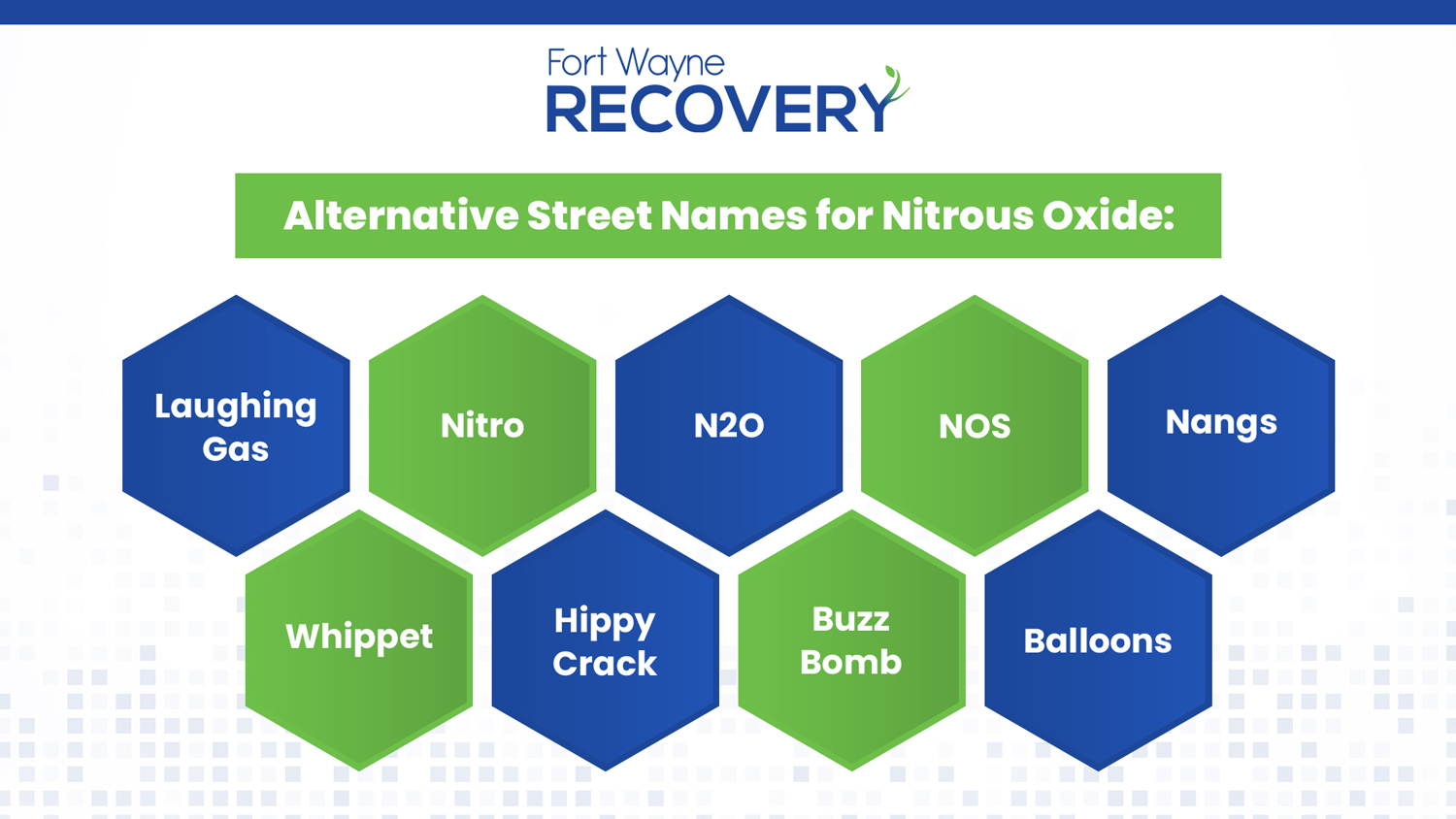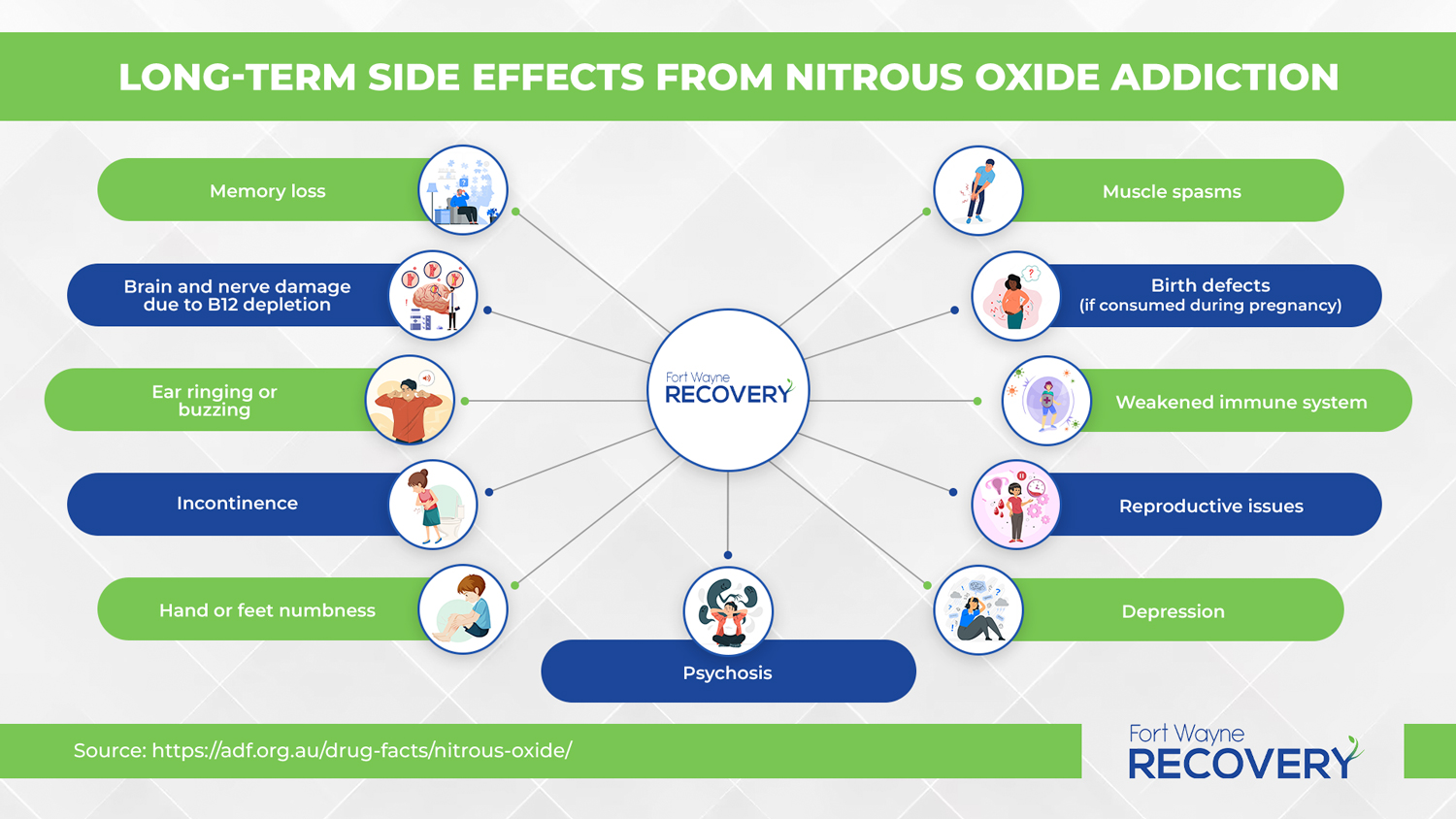Why Nitrous Oxide is Becoming an Increasing Concern Among Gen Z
Why Nitrous Oxide is Becoming an Increasing Concern Among Gen Z
Nitrous oxide, also commonly referred to as laughing gas or whippets has been abused for decades and experienced a resurgence in recent years due to its increasing popularity with Gen Z. Law enforcement officials are reporting that the inhalant is being seen more at festivals and concerts which has prompted states like New York to make nitrous oxide canisters illegal to purchase by anyone who is under the age of 21. The United Kingdom has also experienced a surge in usage. The 2019/20 England and Wales Crime Survey reported that 8.7% of 16- to 24-year-olds had consumed nitrous oxide recreationally, up from 6.1% in 2012/2013 and the report also noted that 2 in 3 users are under the age of 24.
While nitrous oxide may not be addictive in the same way opioids are, it can still cause a lot of health issues and in some rare instances even death. It’s important for parents to understand why nitrous oxide consumption can be dangerous and the signs that their children may be abusing it.

What is Nitrous Oxide?
What is Nitrous Oxide?
Nitrous oxide is a colorless gas that has been used as an anesthetic for sedation and pain relief for medical procedures since the late 18th century, and its use as a recreational drug began shortly thereafter.
While its remained part of the party scene over the years – in the past five years it’s grown increasingly popular with Gen Z who inhale it through nitrous gas cartridges also known as bulbs or whippets either into another object, such as a balloon, or directly into their mouth which causes the user to experience a rapid rush of euphoria or excitement.
Dr. Carl, a pediatric pulmonologist, says that while young people are drawn to whippets because of the high they experience, it can also cause some immediate negative short-term side effects which 50% of people are unaware of. “Inhaling nitrous oxide produces a very transient high — a tingling sensation or a sense of dizziness, calmness, or relaxation,” says Carl.
“You might also notice some slurred speech and loss of coordination.”
“You might also notice some slurred speech and loss of coordination.”
Other short-term side effects from whippets include:
- Dizziness, faintness, or passing out
- Irregular heart rhythms
- Headaches
- Nausea
- Irritability or emotional dysregulation

Why Have Whippets Become Popular with Gen Z
Inhalants like nitrous oxide have always been popular with adolescents, especially those between the ages of 14 to 15 and they are abused more frequently by males than females. However, medical professionals have seen an increase in whippet usage since the pandemic which has hit some places like Detroit hard where authorities found 25,000 steel cartridges in streets and parking lots and in Great Britain where nitrous oxide was banned for recreational use in 2016.
Dr. David Nicholl, consultant neurologist and clinical lead at City Hospital in Birmingham says that young people are consuming nitrous oxide at a much higher rate than before the pandemic “I’ve been a neurologist for 21 years and have seen a definite change in how it’s being used, since the pandemic,” says Nicholl. “Compared to before, now the volumes of nitrous oxide being consumed can be quite terrifying – up to 150 cylinders per day. It’s perceived as safe – and terms like ‘laughing gas’ are especially unhelpful because it makes it sound trivial. But the stuff bought on the street is pure nitrous oxide and not safe for human consumption.” He adds that he sees more of his patients struggling with the side effects of whippets than cocaine abuse.
Another reason for whippets growth in popularity during the pandemic was the increase in social media usage. During lockdowns, young people sought entertainment on social media platforms like TikTok where videos portrayed it as a fun, harmless drug but as Carl points out that is not the case. “In medical use, nitrous oxide is given in conjunction with a pretty high-flow oxygen,” says Carl. “That helps to keep you safe from some of the effects of the gas. People using it recreationally aren’t taking those precautions. They’re just getting straight shots of it, which can be harmful, particularly with repeated use.”
“In medical use, nitrous oxide is given in conjunction with a pretty high-flow oxygen”
Dr. Carl, a Pediatric Pulmonologist
Recreational Nitrous Oxide
Why Should Parents Be Concerned About Recreational Nitrous Oxide Use?
While many parents may feel that they shouldn’t be worried about their children ingesting nitrous oxide from aerosol containers found around their home like in whipped cream canisters, what seems like a harmless act can quickly turn deadly if their child also puts a plastic bag over their heads while inhaling. While deaths from this practice are rare, they do happen and parents should discuss their concerns with their child if they think they think they are abusing nitrous oxide.
Chasing the high from whippets can also be psychologically addicting leading to an increased chance of adolescents seeking the same euphoric feeling from stronger, more deadly substances like heroin or fentanyl. It’s important for parents to also be aware that data shows that their children are also more at risk of abusing nitrous oxide if they live in a rural community, have a history of physical or sexual abuse, live in an area with a high unemployment rate, are lower income or struggles with mental illness.
Just like with any illegal drugs or alcohol, the urge to abuse whippets is often driven by unidentified behavioral health issues. That’s why Nate Moellering, a community outreach coordinator at Allendale Treatment and Fort Wayne Recovery says it’s important for people who are struggling with any kind of addiction to seek treatment that focuses on a dual diagnosis approach. “We always say that addiction to drugs and alcohol isn’t the problem, it’s the symptom of the problems,” says Moellering. “The same thing can be said for things like whippets or even someone struggling with a gambling addiction. If you don’t identify the underlying cause of the addiction such as depression or anxiety, it’s going to be hard to stop that behavior and it could manifest itself down the road to a worse addiction like harder illegal drugs or alcohol.”
“We always say that addiction to drugs and alcohol isn’t the problem, it’s the symptom of the problem”
Nate Moellering, Community Outreach Coordinator

